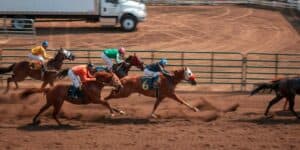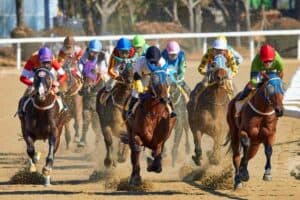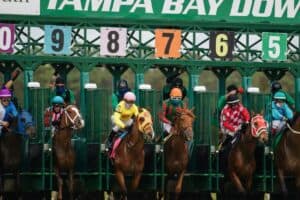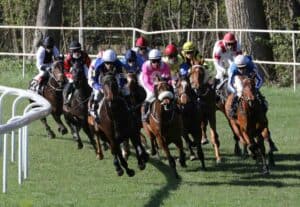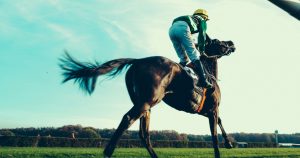







The third week of November brings...


Horse racing news
22
Dec
JTNDZGl2JTIwaWQlM0QlMjJXUmFjaW5nRXZlbnRzV2lkZ2V0JTIyJTIwJTJGJTNFJTNDc2NyaXB0JTNFJTBBJTJGJTJGJTIwaW5pdGlhbGl6ZSUyMGFsdGVuYXJXU0RLJTBBd2luZG93LmFsdGVuYXJXU0RLLmluaXQlMjglN0IlMEElMjAlMjBpbnRlZ3JhdGlvbiUzQSUyMCUyNzdiZXR1ayUyNyUyQyUwQSUyMCUyMGN1bHR1cmUlM0ElMjAlMjdlbi1HQiUyNyUyQyUwQSU3RCUyOSUzQiUwQSUwQSUyRiUyRiUyMGFkZCUyMHdpZGdldCUwQXdpbmRvdy5XVEVDJTIwJTNEJTIwd2luZG93LmFsdGVuYXJXU0RLLmFkZFdpZGdldCUyOCU3QiUwQSUyMCUyMHdpZGdldCUzQSUyMCUyN1dSYWNpbmdFdmVudHMlMjclMkMlMEElMjAlMjBjb250YWluZXIlM0ElMjBkb2N1bWVudC5nZXRFbGVtZW50QnlJZCUyOCUyN1dSYWNpbmdFdmVudHNXaWRnZXQlMjclMjklMkMlMEElMjAlMjBwcm9wcyUzQSUyMCU3QiUwQSUyMCUyMCUyMCUyMG9uUmFjZVNlbGVjdCUzQSUyMCUyOGRhdGElMjklMjAlM0QlM0UlMjAlN0IlMEElMjAlMjAlMjAlMjAlMjAlMjBjb25zdCUyMHNwb3J0JTIwJTNEJTIwZGF0YSUzRi5zcG9ydCUzRi5uYW1lJTNCJTBBJTIwJTIwJTIwJTIwJTIwJTIwY29uc3QlMjBjb3VudHJ5JTIwJTNEJTIwZGF0YSUzRi5jYXRlZ29yaWVzJTNGLiU1QjAlNUQlM0YubmFtZSUzQiUwQSUyMCUyMCUyMCUyMCUyMCUyMGNvbnN0JTIwY2hhbXBpb25zaGlwJTIwJTNEJTIwZGF0YSUzRi5jaGFtcGlvbnNoaXBzJTNGLiU1QjAlNUQlM0YubmFtZSUzQiUwQSUyMCUyMCUyMCUyMCUyMCUyMGNvbnN0JTIwcmFjZU5hbWUlMjAlM0QlMjBkYXRhJTNGLnJhY2UlM0YubmFtZSUzQiUwQSUwQSUyMCUyMCUyMCUyMCUyMCUyMGlmJTIwJTI4JTIxc3BvcnQlMjAlN0MlN0MlMjAlMjFjb3VudHJ5JTIwJTdDJTdDJTIwJTIxY2hhbXBpb25zaGlwJTIwJTdDJTdDJTIwJTIxcmFjZU5hbWUlMjklMjAlN0IlMEElMjAlMjAlMjAlMjAlMjAlMjAlMjAlMjBjb25zb2xlLmxvZyUyOCUyN01pc3NpbmclMjByYWNlJTIwZGF0YSUzQSUyNyUyQyUyMGRhdGElMjklM0IlMEElMjAlMjAlMjAlMjAlMjAlMjAlMjAlMjByZXR1cm4lM0IlMEElMjAlMjAlMjAlMjAlMjAlMjAlN0QlMEElMEElMjAlMjAlMjAlMjAlMjAlMjBjb25zdCUyMHVybCUyMCUzRCUyMCU2MGh0dHBzJTNBJTJGJTJGN2JldC5jby51ayUyRmJldHRpbmclMkYlMjQlN0JzbHVnaWZ5JTI4c3BvcnQlMjklN0QlMkYlMjQlN0JzbHVnaWZ5JTI4Y291bnRyeSUyOSU3RCUyRiUyNCU3QnNsdWdpZnklMjhjaGFtcGlvbnNoaXAlMjklN0QlMkYlMjQlN0JzbHVnaWZ5JTI4cmFjZU5hbWUlMjklN0QlNjAlM0IlMEElMEElMjAlMjAlMjAlMjAlMjAlMjBjb25zb2xlLmxvZyUyOCUyN1JlZGlyZWN0aW5nJTIwdG8lM0ElMjclMkMlMjB1cmwlMjklM0IlMEElMjAlMjAlMjAlMjAlMjAlMjB3aW5kb3cubG9jYXRpb24uaHJlZiUyMCUzRCUyMHVybCUzQiUwQSUyMCUyMCUyMCUyMCU3RCUwQSUyMCUyMCU3RCUwQSU3RCUyOSUzQiUwQSUzQyUyRnNjcmlwdCUzRQ==
As the year 2025 nears its end, the Chepstow Racecourse gets ready for one of its biggest National Hunt steeplechases, the Coral Welsh Grand National. If you are looking for an event to direct your post-Christmas and Boxing Day cheer to, this seems like the right fit!
The richest chase in Wales is hosted by the Chepstow Racecourse. Its history goes back to the beginning of the 20th century, where in the 1920s it was opened first as a flat race course. The first jump race took place two years after its establishment.
Since then, the Chepstow Racecourse has been operating...
22
Dec
If you are looking for some racing thrill to complement your Christmas celebrations, then you have come to the right place. The King George VI Chase is taking place on 26 December, and this ultimate Boxing Day race is a perfect way to see off the year 2025.
The race is a part of a two day Ladbrokes Christmas Festival, and the entire event is hosted by the Kempton Park Racecourse. Opened in July 1878, it now stays functional throughout the year, offering both flat and National Hunt races.
Some of the most notable races conducted at the course include the...
20
Nov
The last week of November has another exciting event in store for those who love jump horse racing. The Fighting Fifth Hurdle meeting will hold its annual races at the Newcastle Racecourse, so mark your calendar and get ready!
The North East of Britain has an impressive horse racing history that goes as far back as the early 17th century. Since then, several important races have been conducted in the area, including the King’s Plate started by King George II in 1753 and the Northumberland Plate, whose first recorded race was held in Town Moor in 1833. In 1882 it...
17
Nov
The third week of November brings jump racing enthusiasts a very special event. The title race of the Betfair Chase Day, the Betfair Chase, celebrates its 20th edition this year. It is the first Grade 1 horse racing event of the British National Hunt season. So if you are looking for a one day jump racing event, mark your calendar for the Betfair Chase Day 2025.
It is conducted at the Haydock Park Racecourse in Merseyside. While horse racing has always been popular in the area, the current racecourse opened only at the very end of the 19th century, in...
12
Nov
November is here, which means the jump race season has fully come into its reign. Multiple hurdles and chases are being held around the country but if you are looking for a grand event at one of Britain’s most popular racecourses, Cheltenham November Meeting 2025 is definitely not something you would want to miss.
Compared to many other British racecourses, Cheltenham is comparatively young, with its horse racing history beginning in the 19th century. Designed specifically for jump races, it stays open from October to April. The list of notable races conducted at Cheltenham runs long, but the most prestigious...
23
Oct
Another prestigious British racecourse is getting ready to close its flat racing season, but before that the horse racing enthusiasts are in for one final treat at the Doncaster racing venue.
This upcoming weekend, Friday, 24 October and Saturday, 25 October, Doncaster Racecourse will open its gates to the participants and spectators of the Futurity Trophy 2025. The Each Way Extra Handicap Stakes will be the first race to begin the meeting, while The Free Digital Racecard At Raceday-Ready.Com Handicap Stakes will close the event, simultaneously closing the flat race season at Doncaster.
The headline race, the Futurity Trophy, will take...
13
Oct
Before the winter season settles in and brings jump races along, Ascot Racecourse invites horse racing enthusiasts to the final meeting of the flat season.
British Champions Day 2025 will take place on Saturday, 18 October to celebrate the end of the flat racing season at the Ascot Racecourse. The QIPCO British Champions Day Two Year Old Conditions Stakes will open the day as its first race, while The Balmoral Handicap Stakes will be the final race of the season.
The QIPCO Champion Stakes, which is the featured race of the event, will be held right before the last race.
Surrounded by...
03
Oct
As October steps into its reign, the flat racing season is slowly approaching its end. But before jump races replace it on the racecourses, there are still a handful of significant events that as a horse racing enthusiast you don’t want to miss. Dubai Future Champions Festival 2025 is definitely one such event.
It is conducted at the famous Newmarket Racecourse, one of Britain’s finest horse racing venues. With a history going as far back as the 16th century, Newmarket Racecourse hosts several important horse racing events throughout the flat season, including the first two Classic Races of the season,...
15
Sep
Another big event on the British flat horse racing calendar is about to open its gates. Before the 2025 flat racing season is closed to give way to the jump races, enjoy your day at the races with the Ayr Gold Cup Festival 2025.
The annual Ayr Gold Cup Festival will take place at Scotland’s very own Ayr Racecourse. Located in the famous poet Robert Burns’ birth town, Ayr Racecourse is a premium Grade One venue that offers both flat and jump races all year around.
Ayr Gold Cup 2025 will last for three days as usual, and this year it...

